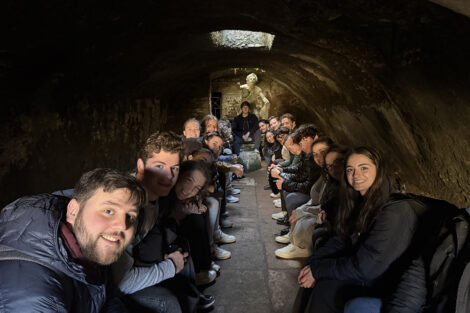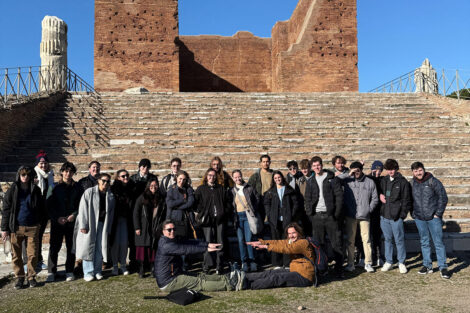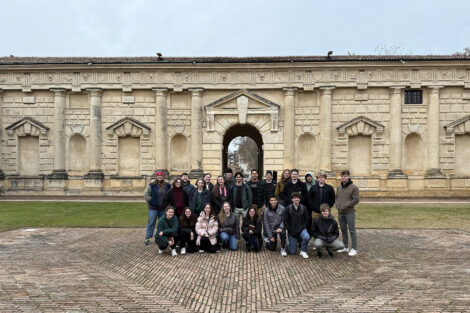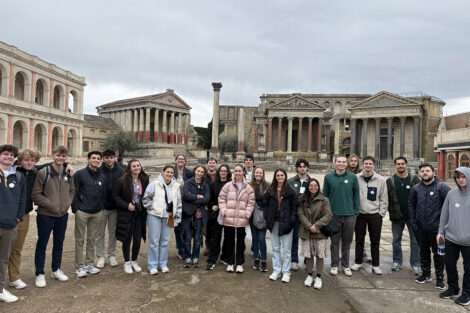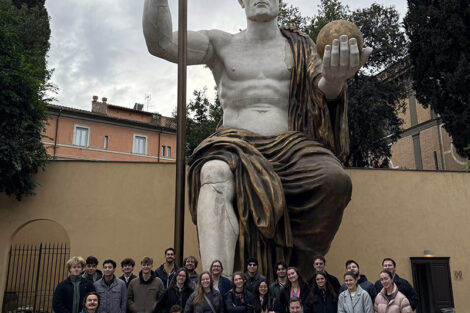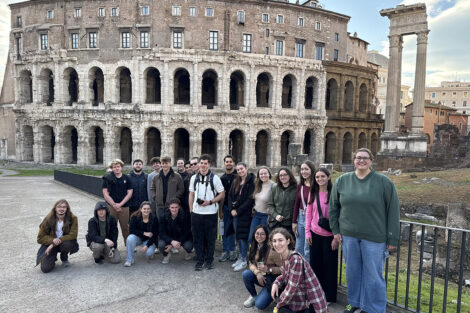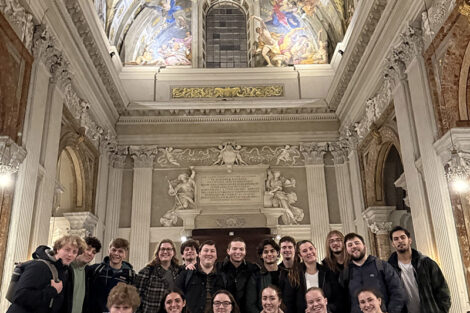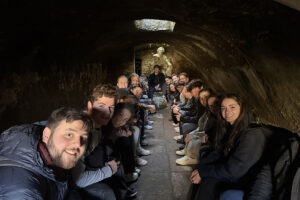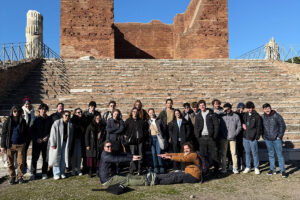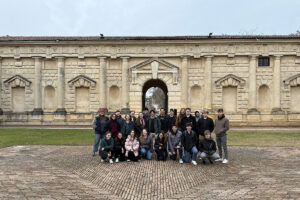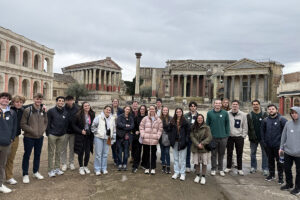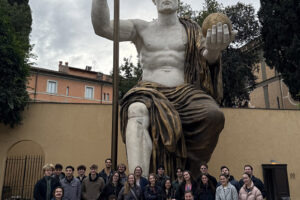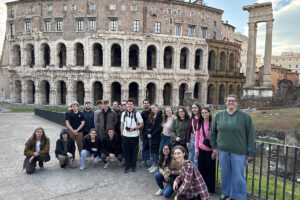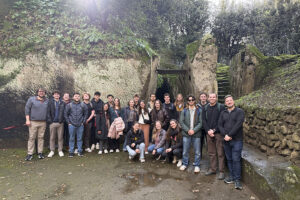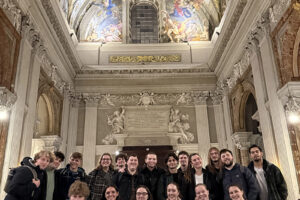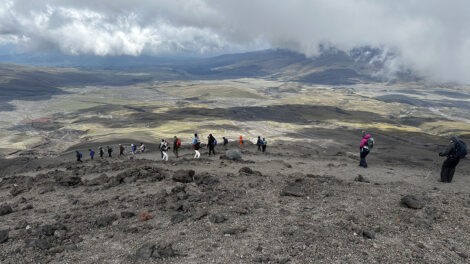Global classrooms: Italy
By Grace Sanborn ’25
Bringing ancient history to the present, the Journey to Rome course guided students across Western Europe during the winter interim.
Tracing the “Grand Tour,” a centuries-old travel route to Rome, Eric Hupe, assistant professor of art history, and Thomas Bolt, visiting assistant professor of classics, asked students to examine the “layers” of ancient Rome and how they have impacted modern Rome.
“It’s very difficult to disentangle these layers, even if you wanted to, but we don’t want to,” Bolt says. “We want to lean into that and show just how interconnected the past is with the present and the present with the past too,” Bolt says.
By examining ancient history, the Renaissance, and modern history through historical sites and art, the course took students from Munich, Germany, across the Alps to Verona, Italy, before spending almost two weeks in Rome.
“Being able to learn about art right in front of the piece was absolutely incredible,” Lauren Davidson ’27 says. “As a STEM major, I wanted to take a course that is something I am interested in but is outside of the courses I have taken thus far.”
Andrew King ’25, a mechanical engineering major with a minor in classical civilization, says he wanted the opportunity to go abroad while still following his interests.
“I have never traveled overseas before, and I thought the Journey to Rome was a great opportunity that combined both my passion for classics and being able to travel to another country,” King says.
Liam Ryan ’25 says that he decided to go on Journey to Rome because he wanted a study abroad experience before graduating.
Bolt says a visit to the Basilica of San Clemente in Rome was a “perfect” reminder of the city’s history. The basilica, which was constructed in the 11th century, was built on top of two previous sites of worship. The other sites have been excavated, which allowed the class to go back in time as they descended.
“As you’re going down, you’re seeing literal layers of Rome, from antiquity to the middle ages to the Renaissance built on top. It’s an actual transfer to the past, and it’s incredible to see,” Bolt says.
